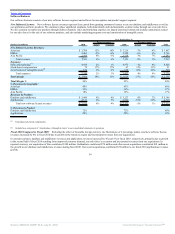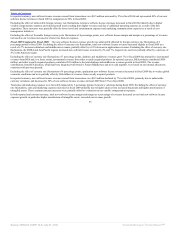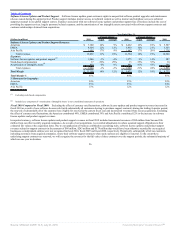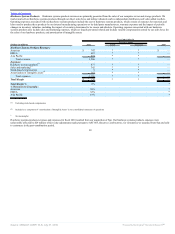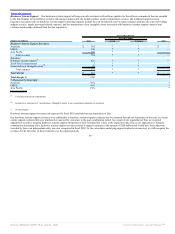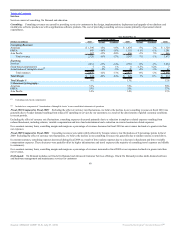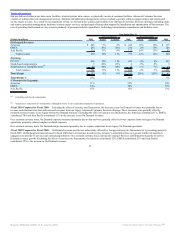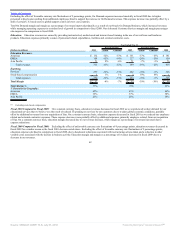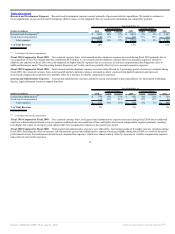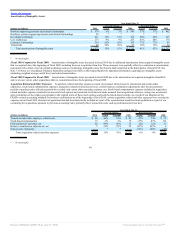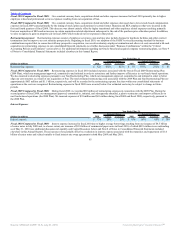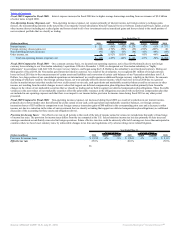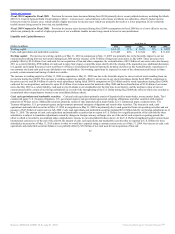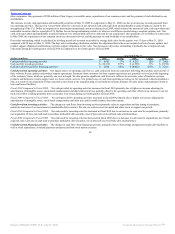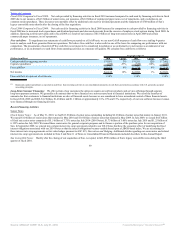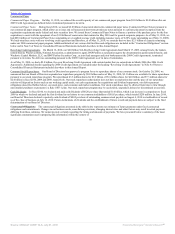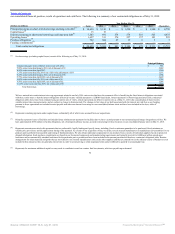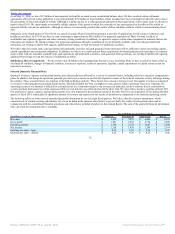Oracle 2009 Annual Report Download - page 66
Download and view the complete annual report
Please find page 66 of the 2009 Oracle annual report below. You can navigate through the pages in the report by either clicking on the pages listed below, or by using the keyword search tool below to find specific information within the annual report.
Table of Contents
Excluding the effect of favorable currency rate fluctuations of 5 percentage points, On Demand expenses increased modestly in fiscal 2009 due to higher
personnel related costs resulting from additional employees hired to support the increase in On Demand revenues. This expense increase was partially offset by a
shift of certain U.S. based costs to global support centers in lower cost countries.
Total On Demand margin and margin as a percentage of revenues improved primarily as a result of our Oracle On Demand business, which increased revenues
while managing operating expenses to a modest level of growth in comparison to fiscal 2008. Our Advanced Customer Services margin and margin percentages
also improved in comparison to fiscal 2008.
Education: Education revenues are earned by providing instructor-led, media-based and internet-based training in the use of our software and hardware
products. Education expenses primarily consist of personnel related expenditures, facilities and external contractor costs.
Year Ended May 31,
2010
Percent Change
2009
Percent Change
2008
(Dollars in millions) Actual Constant Actual Constant
Education Revenues:
Americas $ 132 -12% -13% $ 151 -17% -15% $ 181
EMEA 108 -15% -14% 127 -20% -13% 159
Asia Pacific 71 0% -6% 71 -7% -3% 76
Total revenues 311 -11% -12% 349 -16% -12% 416
Expenses:
Services(1)
257 -12% -13% 292 -10% -5% 325
Stock-based compensation 2 1% 1% 2 19% 19% 1
Total expenses 259 -12% -13% 294 -10% -5% 326
Total Margin $ 52 -4% -7% $ 55 -39% -38% $ 90
Total Margin % 17% 16% 22%
% Revenues by Geography:
Americas 42% 43% 44%
EMEA 35% 37% 38%
Asia Pacific 23% 20% 18%
(1) Excluding stock-based compensation
Fiscal 2010 Compared to Fiscal 2009: On a constant currency basis, education revenues decreased in fiscal 2010 as we experienced weaker demand for our
educational services that we believe was the result of reduced IT spending on services by our customers due to weaker global economic conditions, partially
offset by additional revenues from our acquisition of Sun. On a constant currency basis, education expenses decreased in fiscal 2010 as we reduced our employee
related and external contractor expenses. These expense decreases were partially offset by additional expenses, primarily employee related, from our acquisition
of Sun. On a constant currency basis, education margin decreased due to our revenue decrease, while margin as a percentage of revenues increased due to
expense reductions.
Fiscal 2009 Compared to Fiscal 2008: Excluding the effect of unfavorable currency rate fluctuations of 4 percentage points, education revenues decreased in
fiscal 2009 for a similar reason as the fiscal 2010 decrease noted above. Excluding the effect of favorable currency rate fluctuations of 5 percentage points,
education expenses declined in comparison to fiscal 2008, due to headcount reductions associated with restructuring actions taken and a reduction in other
variable costs associated with the decline in business activity. Education margin and margin as a percentage of revenues decreased in fiscal 2009 due to a
decrease in our revenues.
62
Source: ORACLE CORP, 10-K, July 01, 2010 Powered by Morningstar® Document Research℠




